#kemetic paganism
Text
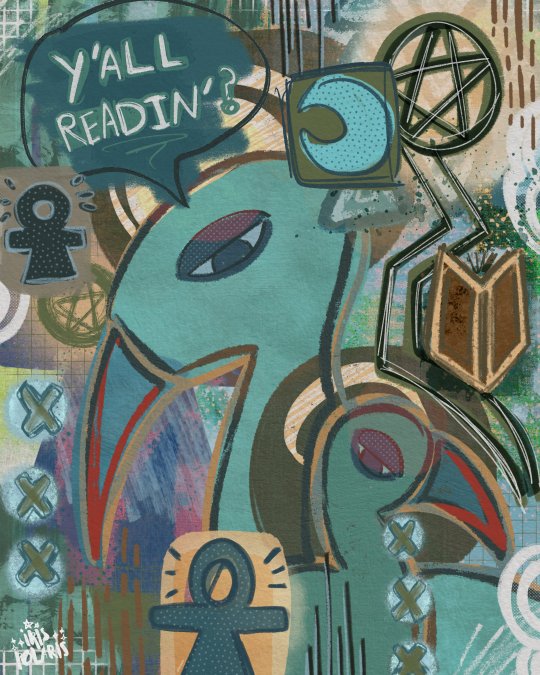
thoth knows the answer (digital, 2024)
[prints]
#digital art#naive art#primitivism#original art#weird art#kemetic paganism#kemeticism#kemetic#thoth#egyptian god#egyptian gods#egyptian mythology#mythology#myth#ibis#myths#reading#books#books and reading
452 notes
·
View notes
Text
The Structure of a Pagan Prayer
When appealing to a deity or making an offering, it’s wise to know how this was traditionally done in the past so you can be as respectful as possible and build a true reciprocity with the gods. This type of prayer structure is found in all manner of pagan religions from Norse paganism, Hellenic (Greek) polytheism, Kemetic (Egyptian) prayer and so on. I got the inspiration and much of the information here from @Ocean Keltoi on Youtube who is a fantastic scholar and Norse heathen who actively stands against prejudice and is all around a wonderful resource.

Now, there are three main elements of a pagan prayer, which should be done in this order:
1. The Invocation. This is where you call upon the specific god you’re hoping to connect with. Think of it as writing the name and address on your letter to the Gods - it lets the deity know that this prayer is directed at them, which is important in a polytheistic religion with many gods. To start your invocation, address the deity directly by name, or use an epithet or kenning that they're known by. It's especially wise to choose an epithet that relates to what you're praying for, like using one of Apollo's healer epithets while addressing him in a prayer about a loved one's sickness, for instance. It’s also a good idea to praise them highly and with a certain air of reverence. These are ancient deities after all.
2. The Argument. Here you give your reasons for why a deity should fulfill your request and favor you. If you’ve brought offerings, cite them here. You can also include reasons for why you’re reaching out, such as love in a prayer for Aphrodite or matters of justice with the god Tyr. This is where you make your case to them. And if you’re reaching out to a deity you don’t have a working relationship with, which let’s be honest will be the case many more times than we’d like, then you can tell them this here also. A good example might be “Oh Tyr, one-handed war god and son of Odin, though we have not met before I have heard your name and been called to it…”
3. The Request. Finally you ask the gods to look kindly on your request and to grant you their blessing. Again, be as respectful and reverent as possible towards them.
Prayer Example: “Grey-eyed Athena, daughter of thundering Zeus, if ever I have poured out sweet wine for you, look kindly on me and grant me your wisdom.”

How to stand when making the prayer
This depends on which God you’re reaching out to and, of course, your own personal comfort. The most common ways of praying are to stand and perform some gesture of reverence, kneel while praying and even prostrate, kneeling fully on the ground with your head down as you appeal to the gods. Some might also choose to wear veils when performing prayers or rituals for deities, though this is naturally up to the individual.
In Hellenic tradition, if you’re praying to an Ouranic god (deities of the heavens) you would traditionally wear your hair up and stand with your arms raised to the heavens while reciting your prayer. Meanwhile, if you are praying to a Chthonic god (deities of the underworld), you would kneel and face downwards towards the Earth with your hair flowing freely.
Some Norse sources tell of ancient pagans prostrating before the gods, and yet this is still not entirely necessary. Pray however you see fit and what is most comfortable for you at the moment.
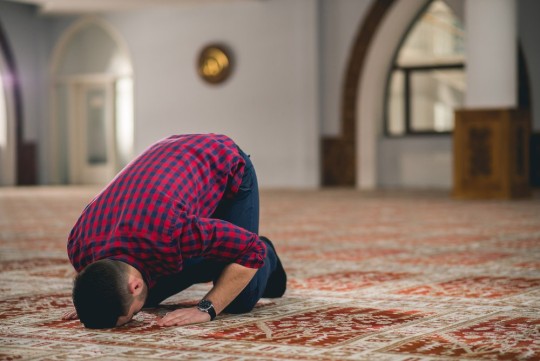
^ This is what prostrating looks like
Sources:
Ocean Keltoi's video on pagan prayers
Hearth and Fire Work's blog post on Hellenic prayer structure
#witchblr#witchcraft#witch tips#deity work#paganism#pagan#polytheism#hellenic pagan#hellenic paganism#hellenic polytheism#norse pagan#norse heathen#norse paganism#heathenry#kemetic paganism#kemetic pagan#celtic pagan#celtic paganism#spirit work
877 notes
·
View notes
Text
your faith and path are completely valid no matter the amount of time that passed since you chose to pursue them. you don't need 14+ years of research and knowledge to consider yourself pagan.
you do not need to have had “pagan signs” since you were a kid to become pagan; you do not need to have always known paganism's existence in modern times to call yourself pagan; you do not need to look for things you did in your childhood to “justify” your path.
you can be pagan even if you spent the past years without thinking about paganism, even if your religious (or non-religious) background was so different than what you believe in now.
if you feel at home and comfortable with this path, you are pagan — no matter if you discovered it a week ago or more than four years ago.
i see you and i support you; your beliefs are valid and they cannot be taken away from you by someone else.
#✉️ @ paganism#pagan#paganblr#paganism#pagan witch#kemetic paganism#norse paganism#pagan tips#hellenic pagan#norse pagan#kemeticism#kemetic#helpol#hellenismos#hellenic polytheism#norse pantheon#pantheon
312 notes
·
View notes
Text






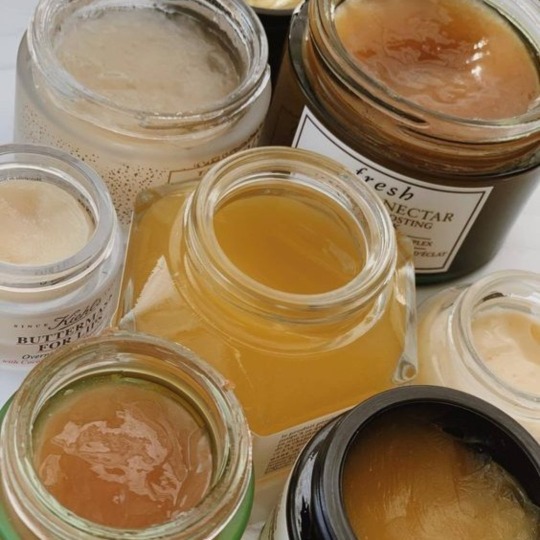


Dua Bast! Dua Bastet!

#dua bast#dua bastet#bast#bastet#kemetic#kemetism#kemeticism#kemetic witch#kemetic paganism#moodboard#deity#deity work#deityboard#witchywitchesshit#witchblr#witches on tumblr#witches of tumblr#witch#witchy#witches#witchcraft#pagan#paganism#pagan witch#coolstuffsnow#netjeru
304 notes
·
View notes
Text
Paganism poll!
If you call your believes "a pagan religion", please vote down below! I'm making a little research for myself, results of which I will post on this blog.
I've made a similar Greek polytheism post!
To clarify, we're are not choosing just one option here! It is implied that nature worship is within the religion or practice regardless. It is the question of mindset of what you put first in your day-to-day worship, what do your festivals/holidays revolve around and such.
If you answer on the poll, please comment/tag your answer and the religion you follow/attribute yourself to!
Although it is not necessarily required for the research I'm doing, that will allow me to do more specific attributions of what religions do people call pagan and what's their actual central part of worship!
Huge thanks to anyone who votes!
Please reblog for a bigger sample size!
#hellenic polytheism#hellenic paganism#norse paganism#norse polytheism#slavic paganism#kemetic paganism#kemeticism#kemetic polytheism#roman polytheism#roman pagan#celtic paganism#helpol#hellenic pagan#hellenic polythiest#morsel:orig#morsel:helpol
132 notes
·
View notes
Text

#Naru's eofferings#kemetic#kemetic polytheism#kemetic paganism#kemetism#Ptah#egyptian mythology#egyptian gods#netjeru#Dua Ptah
86 notes
·
View notes
Text
I had a dream where I met a God with moving tattoos all over his body. The tattoos were of various animals, forever prancing around in circles. An infinite hunt.
I just can't get that image out of my head. It was so breath taking. It's so humbling to 'see' such a thing.
It reminds me how the gods are so much more than what we just perceive them as, y'know?
#paganblr#celtic pagan#paganism#celtic polytheism#pagan#hellenic paganism#norse paganism#kemetic paganism#nordic polytheism#hellenic polytheism#kemetic polytheism#dream
61 notes
·
View notes
Text
pop-culture tags to block as a pagan
(not that anything is inherently wrong with these fandoms!!!! this is just to avoid seeing these fandom's content under searches and tags about your gods if you so choose)
HELLENIC:
#lore olympus / #rachel smyth / #lo / #lo hades / #lo persephone / #lo apollo / #lo artemis / #lo demeter / #hadestown / #hadestown fanart / #hadestown the musical / #the sandman / #the sandman netflix / #dc / #morpheus x reader / #stray gods / #percy jackson / #pjo
NORSE:
#mcu / #marvel / #marvel cinematic universe / #marvel studios / #mcu loki / #loki mcu / #mcu thor / #thor mcu / #loki x reader / #thor x reader / #loki x thor / #thorki / #lokius / #loki series / #tom hiddleston / #god of war / #gow
EGYPTIAN:
#ennead manhwa / #seth ennead / #ennead seth / #ennead fanart / #seven seas entertainment
GENERAL/MISC/OTHER:
#record of ragnarok / #ror / #snv / #shuumatsu no valkyrie / #yaoi / #bl / #boy love
let me know any additions below! this is certainly not comprehensive.
#pagans#pagan#paganism#paganblr#pagan witch#pagan gods#pagan deities#deity work#deity worship#pagan tips#hellenic pagan#kemetic paganism#hellenic polytheism#norse paganism#norse pagan#egyptian pantheon#egyptian paganism#the old gods#heathenry
114 notes
·
View notes
Text
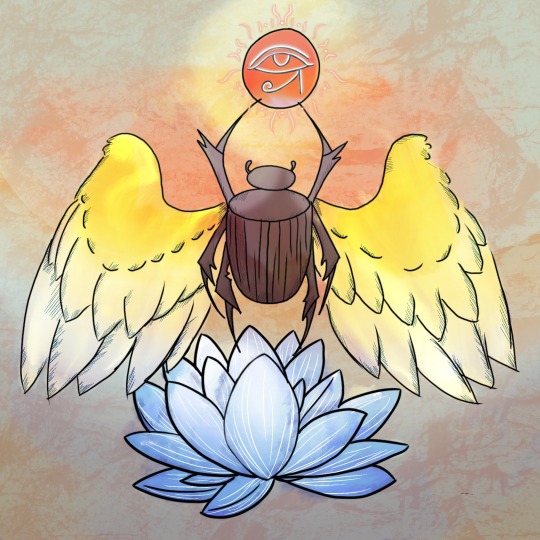
Illustration of Lord Khepri
#artists on tumblr#my artwork#artwork#illustration#digital art#art#my art#ink art#illustrator#lord khepri#khepri#kemetic pantheon#kemetic paganism#kemetic deity#kemeticism#kemetic#paganart#paganblr#egyptian paganism#ancient egyptian art#ancient egypt#ancient kemet#angel number 888
115 notes
·
View notes
Text
Pagan Wedding Flowers (and other plants) Cheat Sheet

Flowers have been associated with weddings for almost as long as humans have been getting married. In fact, the use of flowers in ritual may actually be older than humans! Neanderthal graves in Iraq suggest that Neanderthals buried their dead with flowers. There are mentions of flowers in our earliest recorded accounts of weddings, such as in Egypt, Greece, and Rome.
Historically, couples would have used whatever flowers were available to them. While some cultures had flowers they preferred for weddings because of their symbolism, couples would have been limited by what grew in their area and by what was in bloom at the time of their ceremony. To be truly as historically accurate as possible, consider using flowers you grew or foraged yourself. Bonus points for native blooms!
For those who aren't into growing or gathering your own wedding flowers, modern florists and greenhouses allow us to choose from a wide range of flowers, many of which aren't native to our homes. This makes it much easier to choose flowers based on their symbolism, history, or cultural meaning.
Historic Wedding Flowers + Plants
Roses have been the flower of choice for Western weddings pretty much forever, and with good reason. The rose is associated with several ancient goddesses of sex, fertility, and/or romance, such as Inanna, Ishtar, Aphrodite, and Venus. (Later, medieval Christians would also associate this flower with the Virgin Mary.) Including the goddess's flowers in a wedding may have been a way of invoking her blessing on the union. Sappho called rose "Queen of the Flowers."
Roses are held in a high regard in pretty much every culture with access to them. They're strongly associated not only with love, but also with beauty, wholeness, blessings, and even spirituality.
Rose was included in wedding celebrations in Ancient Hellos (Greece) and Rome. It is associated with the planet Venus and the water element.
Wheat was also a popular inclusion in weddings in ancient Greece and Rome. Hellenic brides would carry sheaths of wheat or another grain to invoke fertility and good fortune. Wheat was strongly associated with agrarian goddesses like Demeter, Persephone, Ceres, and Proserpina. Carrying wheat may also have been a way of expressing a wish for the marriage to produce many children. Pliny the Elder explicitly says in his Natural History that wheat was included in weddings to honor Ceres.
In modern occult systems, wheat is associated with fertility, the conception of children, and wealth. It is associated with the planet Venus and the element of earth.
Olive branches also featured in Hellenic weddings. Olive was an important crop in the ancient Mediterranean, and olive branches were a symbol of peace and friendship. Olive was also used in the victors' crowns in the Olympic Games. In Athens, the olive tree was a symbol of Athena. It was also carried by worshipers of Apollo when they visited the Oracle at Delphi. Olive was also important to the Romans, who associated it with Mars in his aspect as a protector of peace.
In modern magic traditions, olive is associated with beauty, healing, stamina, wealth, fertility, protection and of course, peace. It is associated with the sun and the fire element.
Orange blossoms were included in Hellenic weddings as a sign of happiness. These strongly scented white flowers also sometimes appeared in Roman weddings. Thousands of years later, Queen Victoria wore a crown of orange blossoms at her wedding, but for her they were a symbol of chastity.
In modern systems, orange is associated with joy, partnership, sweetness, and good luck. It is associated with the sun and the fire element.
Hawthorn appeared in weddings in ancient Rome. Pliny the Elder said that Roman bridal processions included a hawthorn torch dedicated to the goddess Ceres. In Rome, hawthorn was more generally associated with love and good luck.
In Celtic cultures, especially Ireland, hawthorn was believed to be a fairy tree. For this reason, cutting a hawthorn tree or bringing hawthorn branches inside was considered bad luck.
The blooming of hawthorn trees was used to determine the date of Bealtaine, and hawthorn boughs were often decorated with flowers, ribbons, and egg shells to make a May bush, which was placed by the front door for good luck. In Britain, hawthorn wood was used to carve maypoles. Hawthorn flowers may be especially appropriate for a May wedding or handfasting.
In modern occultism, hawthorn is associated with protection, healing (especially healing the heart), romantic love, fertility, granting wishes, and happiness. It is still strongly associated with weddings and marriage. It is associated with the planet Mars and the fire element.
Lotus may have featured in ancient Kemetic (Egyptian) weddings. The lotus was an important symbol in Kemetic religion, and was associated with the sun, rebirth, and the creation of the world. Lotus flowers featured in festivals to honor Hapi, the androgynous god of the Nile. The lotus is used in art to represent Upper Egypt. An Egyptian poem from 1100 BCE connects the lotus to marriage.
Lotus flowers were also popular in ancient Chinese weddings, and they're still used by some Chinese couples today. In Chinese culture, lotus represents purity, honor, and long life.
In modern traditions, lotus is associated with protection, spirituality, and blessings. It is associated with the moon and the water element.
Yellow flowers were used in pre-Christian Ireland for blessings and protection. The exact flower used for these rituals is not specified, so it seems like the color was what mattered. Modern pagans looking to carry on this tradition have lots of yellow flowers to choose from. Some popular choices include yellow roses (see above), yellow amaryllis (associated with creativity, playfulness, and joy), chrysanthemum (associated with long life, optimism, and protection), marigold (associated with happiness, rebirth, and vitality), and/or daffodils (associated with love, fertility, and luck).
Modern Wedding Flowers
We've gone over some of the flowers that were popular in historic pagan weddings, but it's also easy to pagan-ify the flowers that are most popular in modern weddings. Here's a quick rundown of some popular wedding blooms and their neopagan and occult symbolism:
Peony is associated with purification, healing, prosperity, and success. In ancient Rome, peony was believed to be sacred to Mars. It is associated with the sun and the fire element.
Dahlia is associated with mystery, occult wisdom, and transformation. It is associated with the moon and the water element.
Lilac is associated with balance, peace, romance, protection from evil, and attracting friendly spirits. It is associated with Venus and the water element.
Sweet Pea is associated with comfort, charm, and sweetness. It is associated with Venus and the water element.
Hydrangea is associated with healthy boundaries, breaking negative patterns, hex breaking, and protection. It is associated with water and with both the moon and Neptune.
Tulip is associated with beauty, desire, gratitude, love, prosperity, and simplicity. It is associated with Venus and the earth element.
Orchid is associated with beauty, elegance, sexuality, fertility, and romance. It is associated with Venus and the water element.
Lily is associated with spirituality, beauty, harmony, and protection from the evil eye. It is associated with Venus and the water element.
Carnation is associated with beauty, love, rebirth, strength, and healing. Carnations are associated with same-gender love and especially love between men because of Oscar Wilde's fondness for them. They are associated with the sun and the fire element.
Gardenia is associated with love, peace, healing, and spirituality. It is associated with the moon and the water element.
Resources:
"New Neanderthal remains associated with the ‘flower burial’ at Shanidar Cave," Cambridge University Press
"History of Wedding Flowers" by Benna Crawford
The Roman Wedding by Karen K. Hersch
"The Olive in the Ancient Mediterranean" by Mark Cartwright
"The History, Mythology, and Offerings of Hawthorn" by Meghan Pivarnik
Where the Hawthorn Grows by Morgan Daimler
Temple of the Cosmos by Jeremy Naydler
The Magic of Flowers by Tess Whitehurst
The Magic of Trees by Tess Whitehurst (see my disclaimer about Whitehurst's books, but these are some of her better ones)
Cunningham's Encyclopedia of Magical Herbs by Scott Cunningham
#the great handfasting project#handfasting#pagan wedding#wedding magic#queer wedding#pagan#paganism#pagan witch#hellenic polytheism#hellenism#religio romana#cultus deorum#roman polytheism#kemetic paganism#kemetic polytheism#irish paganism#irish pagan#irish folklore#wicca#wiccan#flowers#flower magic#correspondences#love magic#love spell#green witchcraft#green witch#witch#witchblr#witchcraft
502 notes
·
View notes
Text
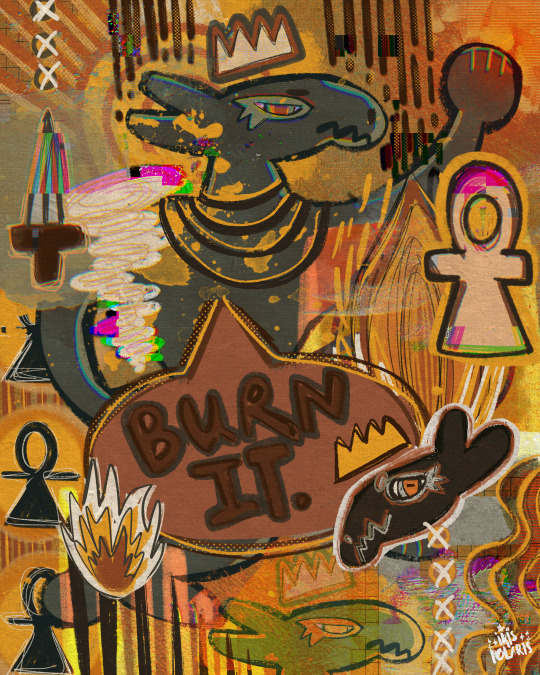
set burns it down (digital, 2024)
[prints]
#digital art#naive art#primitivism#original art#set#egyptian mythology#seth#egyptian myth#kemetism#kemetic#kemeticism#kemetic paganism#myths#mythology
133 notes
·
View notes
Text
Friendly reminder that you are not obligated to worship the Gods as they were traditionally worshipped. Incorporating modern practices of ancient religions is just as valid. Remember that you can create a regime that caters to your schedule, health, and financial situation. They understand and appreciate the acknowledgment you are able to give.
#polytheism#polytheist#pagan#paganism#deities#deity#pagan advice#hellenic polythiest#hellenism#roman polytheist#norse polytheist#norse pagan#roman pagan#greek pagan#pagan gods#wicca#kemetic paganism#kemetic pagam#kemetic#norse#roman#greek#religion#occult#occultism
3K notes
·
View notes
Text
a friendly reminder to pagans & witches:
it is okay if you weren't productive today.
it is okay if you didn't do any spellwork.
it is okay if you didn't pray.
it is okay if you didn't offer something to your deities.
it is okay if you didn't learn anything new.
it is okay if you didn't feel like doing something related to your craft.
it is okay if you didn't have any motivation to do anything.
it is okay.
your path is yours and it should make you comfortable.
perhaps you had planned many things to do, perhaps you wanted to learn more, perhaps you wished for some time alone with your deities; or perhaps you were looking forward to something else.
it is okay if you couldn't do it — whether you weren't feeling well, you had other things to do or you just didn't want to.
your practice should be something that is useful and helpful, something which you should benefit from. take this into account when you are in your spiritual space <3
#✉️ @ paganism#✉️ @ witchcraft#paganism#pagan#paganblr#pagan witch#pagan tips#witchblr#witchcraft#witch#witches#witches of tumblr#norse paganism#hellenic pagan#kemetic paganism#kemeticism#norse pagan#hellenismos#helpol#hellenic polytheism
383 notes
·
View notes
Text
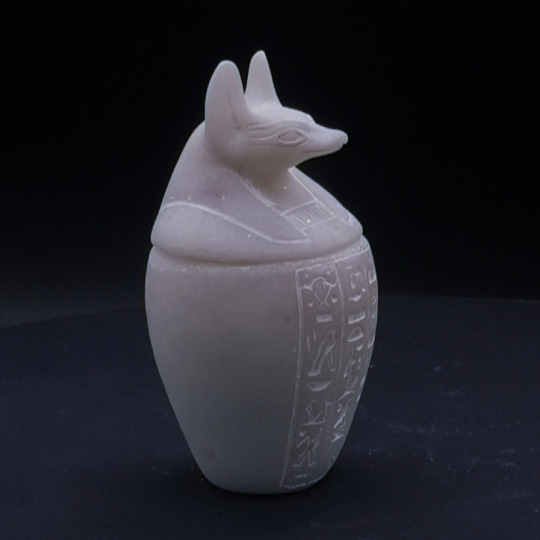


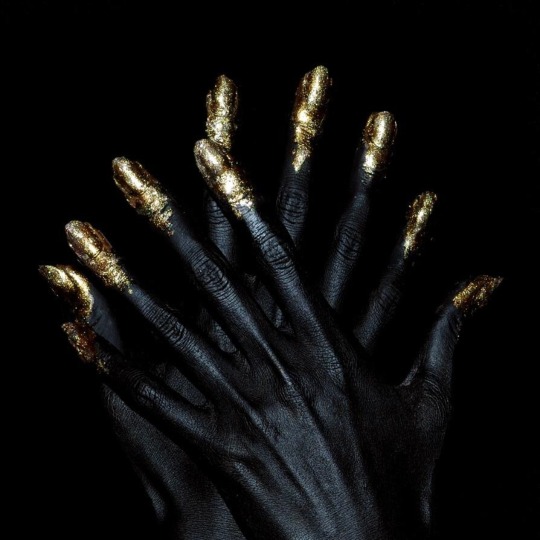
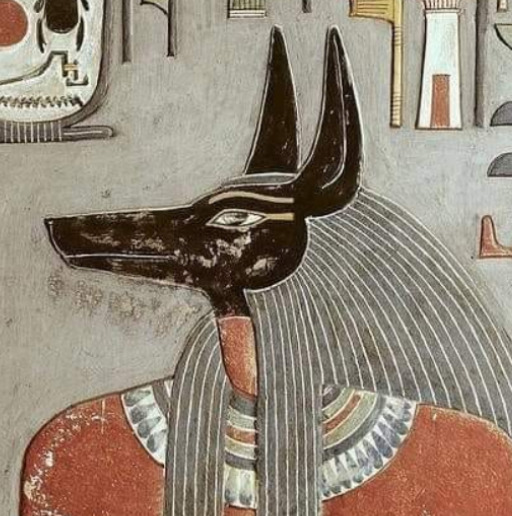
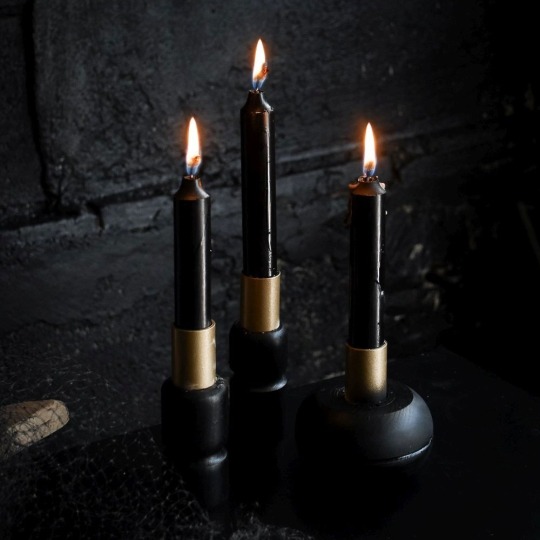



Dua Anpu! Dua Anubis!

#dua anpu#dua anubis#anpu#anubis#kemetic#kemetism#kemeticism#kemetic witch#kemetic paganism#moodboard#deity#deity work#deityboard#witchywitchesshit#witchblr#witches on tumblr#witches of tumblr#witch#witchy#witches#witchcraft#pagan#paganism#netjeru#coolstuffsnow
177 notes
·
View notes
Text
pac which deity should you reach out to




reminder: these are very general readings. messages can be picked from each pile and apply to you and your current situation. take what resonates, leave what doesn’t :)
just to preface, i work with a few deities regularly and have communicated with several for various reasons. this reading is all in good fun, all of the deities that came through in this pick a card reading were made aware that this was for a collective group of people and they agreed to be included! if you feel called to reach out to any of the deities below, feel free to do so! just be sure you do some research before diving into things — if you need help or don’t know where to start, my messages are always open :)

pile 1
the deity that made their presence known for pile one is the greek goddess selene! she made herself known with the moon card. selene is the greek personification of the moon. she is typically worshipped during the full moon and new moon but she can be called upon whenever you need her energy. she sees everything that goes on in the night and she travels across the sky in her chariot every night, pulling the moon behind her.
she may be helpful in your healing process if you have emotional wounds that still haven’t healed. she can be somewhat cold at times but that’s because people don’t truly understand her and her experiences. she can help you tap into your unconscious and become aware of the tools you need in order to heal. she also brings forth our shadow self, making us face those parts of ourself that we tend to shy away from. her main goal usually lies within the realm of having us let go of the things we truly have no control over. letting go of those things we cling so hard to gives us the freedom to heal and be happy with who we are and what we have.

pile 2
the deity that made their presence known for pile two is the egyptian goddess isis! she chose to make herself known through the temperance card. isis is the goddess of a multitude of things, including but not limited to healing, magic, fertility, and even motherhood. she is a goddess who is fiercely protective over her worshippers and even those who just casually work with her from time to time. she provides a very nurturing environment and makes you feel safe and warm inside.
she can help us hone in on our intuition and help give us the guidance we need to feel comfortable enough to share our intuitive gifts with others. she is also helpful when it comes to making decisions that might be difficult for us to fully comprehend, thus giving us the clarity we need to make the best decision for everyone involved. since she has that motherly spirit about her, she’s also strict when she needs to be. if she catches you procrastinating or losing motivation, she will put you in your place. she allows us to get into the habit of practicing moderation. she is very upfront about not wanting to deal with extreme behaviors or personalities, she wants to promote balance in any way that she can.

pile 3
the final deity that made their presence known is the norse god odin. he chose to make himself known through the magician card. now odin, just like isis and selene, has so many different facets about him but i’m going to try to limit myself for this collective reading. odin is the all father in norse mythology, he is the god of war and death, but also poetry and magic, hence him coming through as the magician!
odin is a great deity to reach out to do just about anything, but my experiences with him have to do with finding my own inner strengths and knowing when to reach out to others. i know that everyone’s experience is going to be different but those are just a few things he helped me with. moving forward, he can help us see what we aren’t seeing, he sees all and isn’t afraid to show us what we need to see. he can also help with learning to trust your own abilities and not having to rely too much on what other people think about. he can help us feel like we are truly capable and competent when it comes to knowing what steps we need to take to get to where we want to go. he also has a more parental aura about him like isis due to him being the all father. his wisdom and skills are very strong aspects of his and they tend to rub off on the people he works with.

if you’d like a more in depth reading i offer paid readings here!! i also have a tip jar if you’re feeling kind,, tips are not expected but they are very appreciated! any feedback is appreciated as well, i hope this reading was helpful to you in one way or another :)
#my readings#pac#pac reading#pick a card#pick a card reading#pick a pile#pick a pile reading#tarot#tarot reading#free tarot reading#collective reading#divination reading#tarotblr#tarot community#deity work#kemetic paganism#norse paganism#greek polytheism
292 notes
·
View notes
Text


(From research but also from my own workings with him. This isn’t meant to be strictly historical this is more for pagans wanting to work with him. There will be a lot of UPG or SPG)

Anubis/Anpu/Inpu/Inpw (and some other spellings depending on where you look) :
-He is the jackal headed Egyptian god of mummification, funerary rites and a fierce protector of tombs and places where people are buried.
- a lot of stories have him as either the son of Nephthys and Set or the son of Nephthys and Osiris. I personally go by the mythology where he is the son of Osiris, then taken in by Aset and raised as an adopted son after the death of Osiris. He is fiercely loyal to his adopted mother and his father. As well as supportive of his half brother Horus (Heru-sa-Aset)

What working with him is like
-He is a sort of Psychopomp deity for dead souls. Also in my experience can help bring you into meditations with other spirits safety (he’s guided me to a few of the other deities I work with now)
- He is a fierce protector. Big guard dog energy. Doesn’t usually have a huge temper until something threatens him or a follower of his.
-Most of the time he’s a very calm and patient deity. He will give space when you need it, and also be around when you need him too. He tends to put in the effort that you do. But if you can’t put in much effort he’s patient (just quieter maybe if you’ve backed away from him first)
- He is usually the first one to jump in to help when I’m going through something emotionally rough. It could be because he is my patron but I do feel like he is the type of deity to want to be there for, and comfort his followers/devotees.

Offerings for Anubis
(These are the personal ones I use because they work for my own practice and lifestyle- feel free to share any of your own!)
Crystals
- tigers eye
- obsidian
- onyx
- jet
- lapis lazuli
- red/brown goldstone
- labradorite
- Dalmatian jasper
Incense
- frankincense
- Egyptian musk scents
- Sandlewood
- Myrrh
- Tobacco
Food offerings
- Dark chocolate
- dark bread
- red wine
- water
Other physical offerings/associations
- dog statues/imagery
- ankhs
- wooden things/wood carvings
- jewelry with gold on it
- keys
- black candles
- gold candles
- brown candles
- the death tarot card
- the hanged man tarot card
- the emperor tarot card
Devotional offerings
- self care
- taking care of your own dog/a dog
- volunteer at dog shelters
- donate to animal shelters/rescues
- learn about him
- learn about the history of the pyramids and mummification
- draw him
- write poetry for him
- play music/dance/sing for him

How to know if he’s reaching out to you?
Best way to know is to confirm by tarot or your clairsenses if you have any. Or candle flame reading/other forms of divination.
If you’re looking for signs he’s popping up (this is rather morbid but so it goes with the god of mummification and decay) he tends to send roadkill to me. If you see a lot of extra roadkill on a drive to work/a regular route that isn’t usually there. That could be a sign. (I like to ask him to help guide their souls somewhere nice whenever I see roadkill)

I think he’s an excellent deity for beginners and if you feel called to him I’d say go for it! I started with a simple candle dedicated to him and went from there!
#Anubis#anpu#kemetic paganism#kemetism#deity worship#deity witchcraft#Egyptian gods#pagan witch#deity work#deity offerings#Anubis offerings#deity guide#Anubis guide#death gods
291 notes
·
View notes